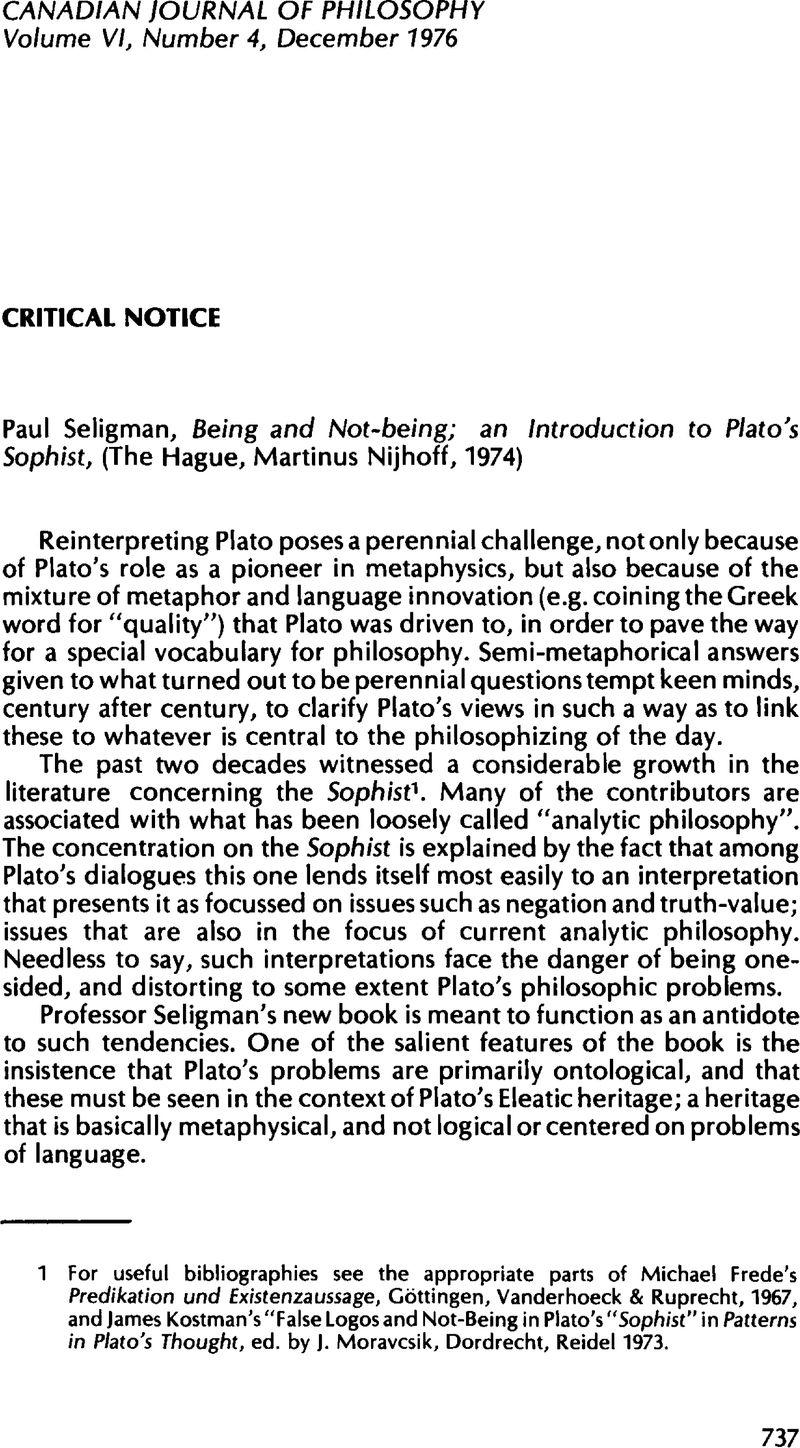Published online by Cambridge University Press: 01 January 2020

1 For useful bibliographies see the appropriate parts of Frede's, Michael Predikation und Existenzaussage, Gottingen, Vanderhoeck & Ruprecht, 1967Google Scholar, and Kostman's, James “False Logos and Not-Being in Plato's “Sophist” in Patterns in Plato's Thought,ed. by Moravcsik, J. Dordrecht, Reidel 1973.Google Scholar
2 For details see Moravcsik, J. “The Anatomy of Plato's Divisions” in Exegesis and Argument (Festschrift for G. Vlastos) ed. by Lee, E. Mourelatos, A. and Rorty, R. Assen, Van Gorcum, 1973, pp. 324–348Google Scholar.
3 Frank Lewis, “Did Plato discover the ESTIN of identity?” mimeogr. 1975.
4 Seligman criticizes repeatedly, among others, the earlier work of this reviewer. It will be clear from the above to those familiar with the controversies that on some points I have changed my views and that on others I remain intransigent. There remain many points on which Seligman indicates disagreements with me; it did not seem to me appropriate within the confines of this review to respond to all of these.